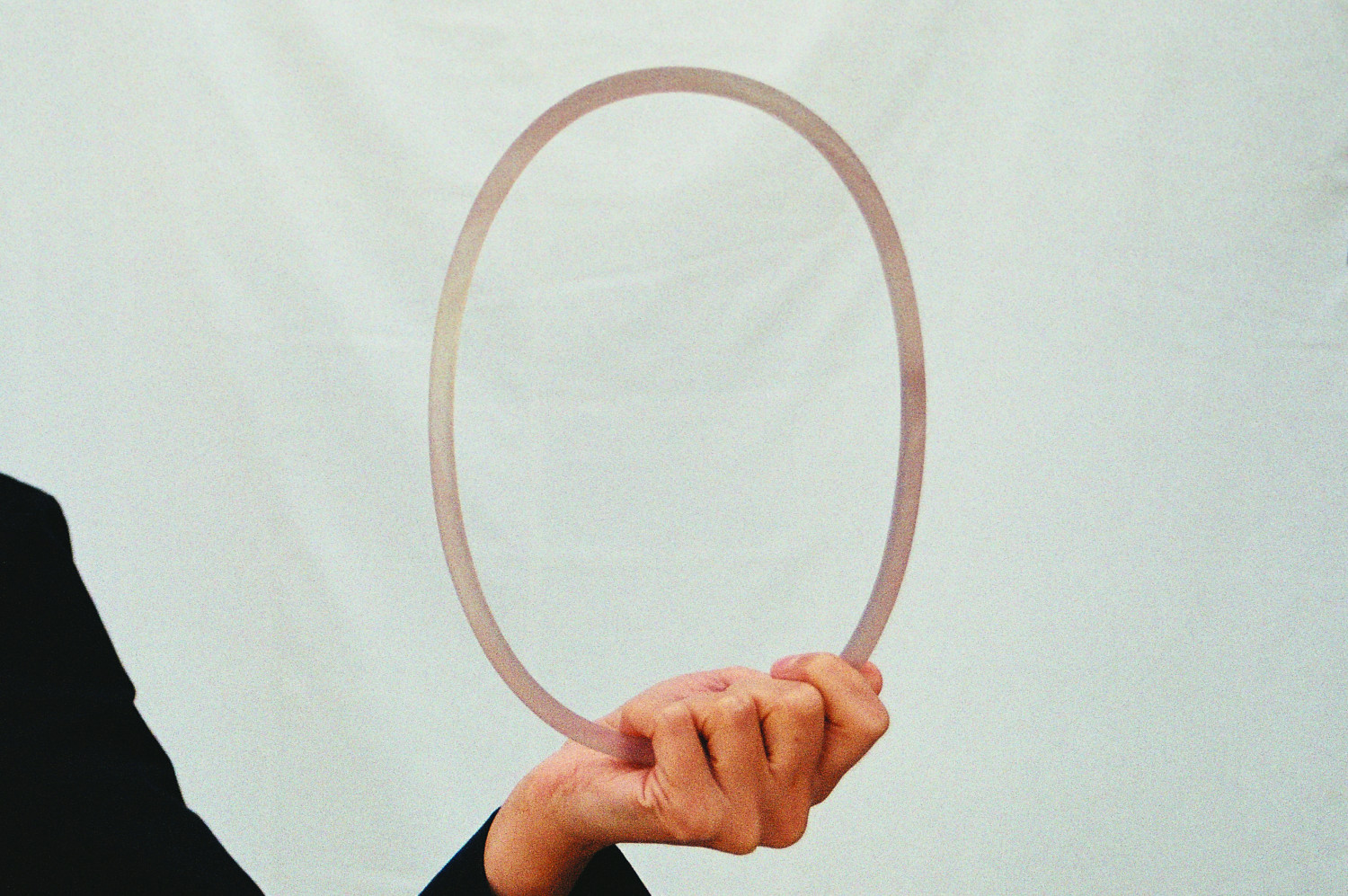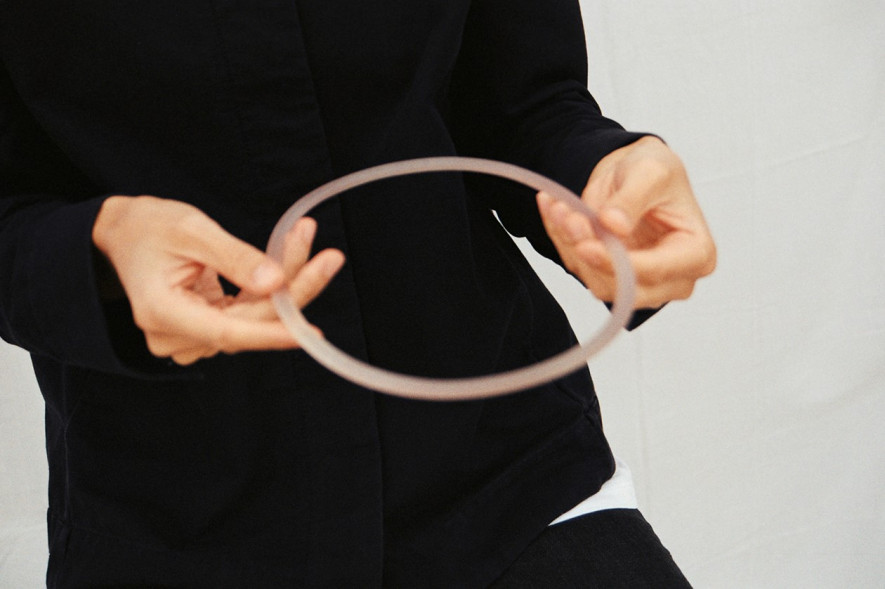Interview with Triin Kukk
Triin Kukk (b. 1990, Estonia) currently lives and works in Amsterdam, the Netherlands. She studied at the Jewellery and Blacksmithing department at the Estonian Academy of Arts in Tallinn, Estonia, MA from 2016 to 2019. During her studies she was an exchange student at the Saimaa University of Applied Sciences in Imatra; Hochschule Trier, Idar-Oberstein and Hiko Mizuno College in Tokyo.
The focus of her artwork lies on observation of the everyday and discovering something new in it. The artist is intrigued by vague shifts and emphasizing the secondary aspects. During recent years, Triin has used natural minerals and applies different techniques in her artistic practice. During her residency, she will incorporate remnants of her previous works into a new series.
In June 2023 Triin Kukk and Tom Iriks wrote this interview.
Why did you decide to become a jewellery artist?
I guess it’s a mix of events and experiences that took place before my studies. I somehow always had a sense that this is what I want to do. I was fascinated about the little pieces in my mother’s and grandmother’s jewellery boxes and I didn’t had any idea how they were made so it’s a curiosity that lead me to study jewellery making. Making and breaking
Could you share some experiences that influenced you?
I have a childhood memory where I find myself ‘eating’ my grandmother’s necklace adorned with some sort of red artificial pearls. I still remember the taste of it. Also, I used to wonder around the neighbourhood, climbing on the trees and collecting stones. After rainfall, the hilly asphalt-free village road, next to the cemetery, revealed its colourful gems. The most precious ones were the minerals that consisted quartz. My grandfather used to weld, and still does actually, at his garage and every time he told me not to look into the welding light, our dog Pärri lost his eyesight by looking at it. About sixteen years later I learned to weld myself and it kind of demystified the whole process. I finally had a chance to have a closer look into the forbidden light.
How would you describe your work?
It celebrates boredom and highlights the invisible.
Can you talk about your series “Venus was here”?
‘Venus was here’ reflects on my research project I had at the Academy. I feel there’s so much more to find out while working with the minerals. So it’s an ongoing project and the ‘titles’ vary although it’s still more or less the same project I’m working on. There are many aspects and ways how to approach and that’s also the reason I don’t stick with the one ‘title’. Lately I’ve been using leftover materials, mainly granite and marble, from the table top industry. I’m also playing with the idea of how the fossils from the future could look like, what do we leave behind.
Your work seems to find poetry in unexpected places. Could you explain where the ‘poetry’ for you lies in a ‘building site’?
The poetry lies in the details. The accidental and intentional compositions by construction workers can form messages, or at least have the potential to, that create very different storylines for those who pass-by. The outcome depends of the focus point of your attention and interests. It can be as well just an annoying mess that blocks your way to home.
What are you planning to research and improve during the residency?
I have collected all the leftover pieces and failures from my stone carving work so I’ve been trying to adjust those pieces into jewellery. The aim was to keep wearability in mind, I’m usually not thinking about it too much while making, but I really wanted to have this challenge to create something you could wear more easily and DIVA seemed to be a good place for this approach.
I’m quite influenced by the environment I’m working in. I’m still trying to process intense vibes of Antwerp, it’s very visual as well as hectic. I guess the outcome is also a bit chaotic and there’s still quite a lot to process and ideas to continue working with. (I have always quite many different ideas and it’s a bit of a struggle to focus on one. That’s why working with the minerals suits me rather well – I’ll just take the time to sit still and work on hours with the piece.)
During this residency I tried sandcasting for the first time. It’s a really basic technique and all of those years during my studies (2011-19) I never tried it, there was always something else to do. So here at DIVA I had time and possibility to explore it a bit. And it really is like taking photos with a film camera. After doing everything ‘correctly’ the outcome can still hold a bit of a surprise. I appreciate this unexpectedness, the ‘analogue wilderness’ it has.
Do you write, draw or photograph when developing new work?
Creating some sort of visual context is essential to my making process. As I work with materials, new ideas and questions arise, so it’s a ping-pong in between different mediums really.
Could you explain your personal journey in art and which experiences shaped your artistic path?
It has definitely been challenging and intense, full of fascinating people, massive amount of questions and hesitations as well as excitement. Art came quite late into my life. Just the night before applying to the Estonian Academy of Arts my friend showed me few tricks how to draw and we kind of arranged my portfolio at the same night. To my surprise, I was accepted, couldn’t be happier.
What aspect of being an artist do you enjoy most?
Transferring the ideas from my head into the material.
What is your favourite or least favourite part of being an artist?
The aspect that can be so comforting and hair loss causing at the same time – unstable ground.
What inspires you to create? Where do you get your ideas from?
Keeping my eyes and the other senses open to weird and mundane everyday life.
What are your long-term goals as an artist? What is your dream relating to your art career?
I can’t separate art from my life, it’s a way to cope and make sense of life and myself. I hope to stay curious and to continue making things with my hands. And to get involved into different projects as well, let’s see.



.jpg)
